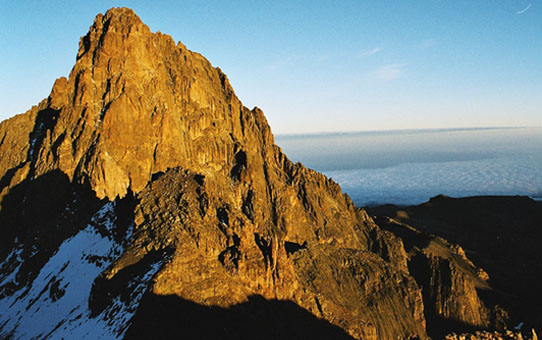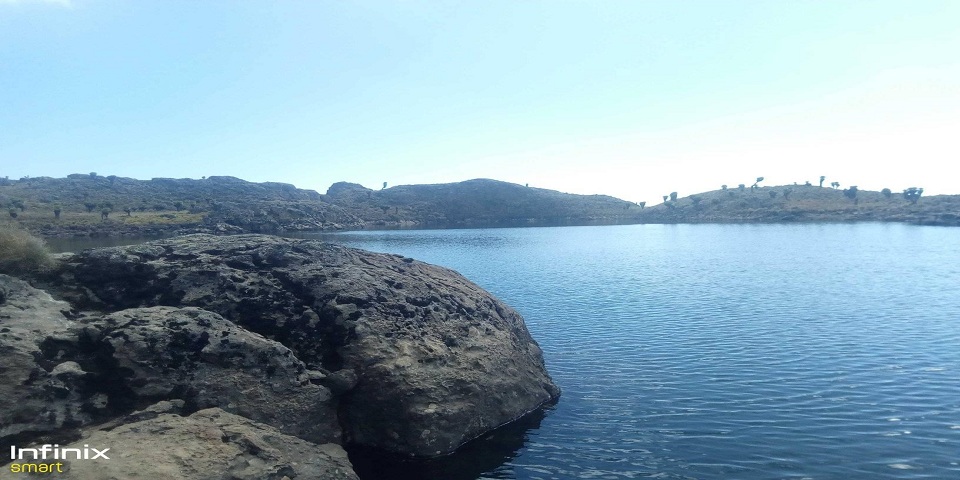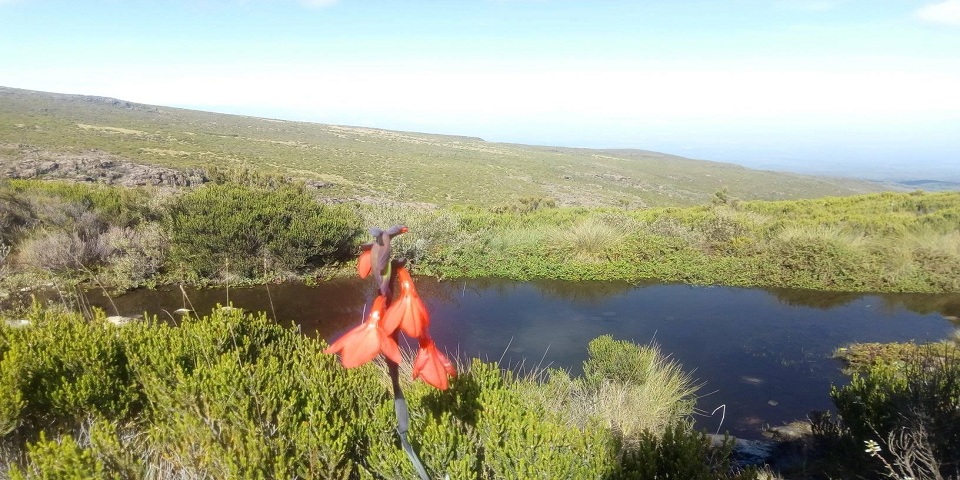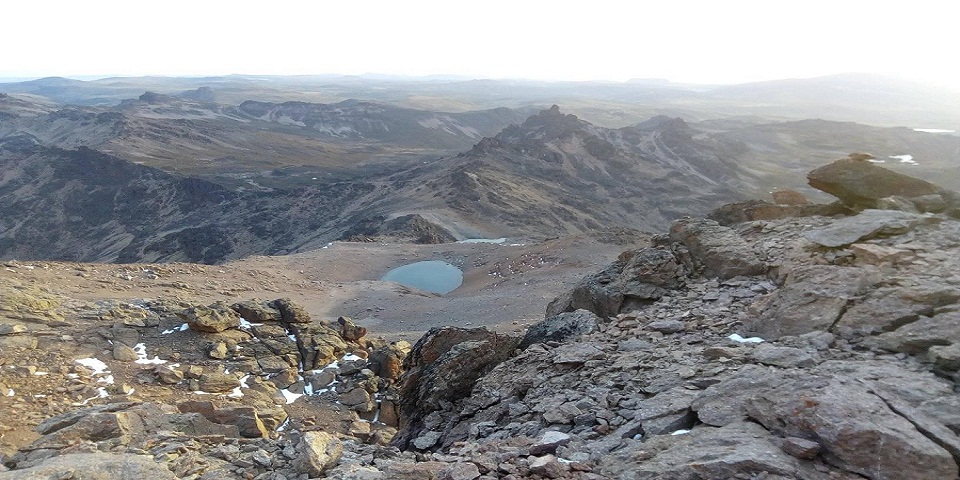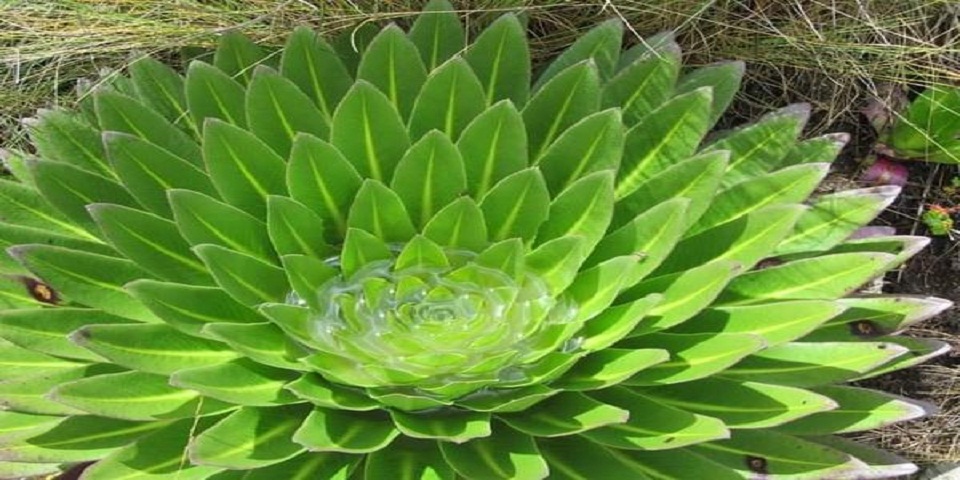Choose the right route
The most important piece of advice I can give you is have a minimum of 5 days on the mountain. If you want to be safe, successful and have the best experience possible.one of the problems people have is trying to go up the mountain way too quickly, not allowing themselves the necessary time to acclimatize to the low levels of oxygen.
Train, you do have to physically prepare your body if you want to fully enjoy your adventure.
I would recommend that you spend at least 2 days a week doing some sort of intense physical exercise for approximately a month or 2 prior to your starting date of your climb. Personally, I would have spent at least 4 days a week either walking up hill on a tread mill or walking on a stair-master (stair master is best) for one hour+ building up to 10kg (22lbs) in a backpack on your back. I would spend at least one day a week out in the hills or mountains for at least a 4 hour walk and building up to 7 hours in a row. If you do not have access to mountains or hills to train on, you can always add extra weight to your backpack and just do longer walks on the treadmill/ Stair master and in the gym
Mentally prepare
Depending on your level of comfort with the outdoors, you may need to prepare yourself for life on the mountain,including camping, bugs, dirt, baby wipe showers, and going to the toilet outdoors! However, for some who are more comfortable with the four seasons than a campsite, you may need to prepare yourself for what is to come. most accommodation on our mountkenya trips is camping, and sleep is essential when you are on the mountain, so you need to be prepared for 3 to 4 nights of camping. Obviously, showers are non-existent on the mountain, so the only way to keep you clean is to use baby wipes and a bowl of warm water each day. You do need to prepare yourself for these things, as you do not want to arrive on the mountain and have higher expectations and be disappointed.
Make sure you have the right clothing
There are many pieces of gear and clothing that are essential for a mountain trip like mountkenya or Kilimanjaro, First of all, your feet are one of the most important parts of the body to take care of when trekking. Never skimp on footwear when you are going on a trip like mountkenya Buy a good, sturdy, waterproof pair of trekking boots and make sure that you break them in before you leave for Africa. Number two, buy yourself a good down jacket with at least 650 fill down with more down, but if you can afford it I would stick with a 700 or 750 fill down. Remember that every brand and style is different and if you are questioning your down coat, make sure to ask the advice of a professional before the trip as this piece of gear can be essential during the cold nights and mornings on the mountain. Number three, having both a platypus (i.e, Camel bak brand) water carrier and a Nalgene style plastic bottle. Drinking water is essential on the mountain (See Tip #5) and lower down on the mountain I find that having a Camel bak helps you to drink water without the use of your hands, which usually makes you drink more water as you do not have to stop to get the bottle out and drink water. With that said, a Camel bak is likely to freeze on summit night and higher up on the mountain, and if you do not have an alternative water bottle like a Nalgene, you will not have any access to water. Now those three tips are obviously not the only gear you will need on the trip, but these are three essentials that I would make sure to have in your kit bag.
Hydration is so important while climbing mt kenya
If there is one tip that I can give you while on the mountain, it is to make sure that keeping hydrated is one of your top priorities. At higher levels of altitude, your body will dehydrate much quicker than it will at sea level, and you will have to make sure you are drinking plenty of water e.g 5 litres in a a day while hiking .
Don’t be afraid of a little Headache
You should be taking diamox, unless your doctor says otherwise. There are some alternatives to taking diamox.but it is almost inevitable that you will get some sort of headache at some stage on the trip. One of the best ways to combat these headaches is by listening to the advice of Tip 5; always drink plenty of water while on the mountain. One of the greatest causes of headaches on the mountain is due to dehydration, so drinking water can greatly help to eliminate or lessen your headaches. Another trick that I have found to be helpful is to add a Disprin to my water every morning and another each evening. This will help to slightly thin out your blood and help to reduce headaches caused by the thickening of your blood at altitude. I highly recommend taking Ibuprofen at high altitude. These headaches are completely normal to experience at altitude and they are not something to be too afraid of, however if these headaches get very extreme and limit your ability to think straight, eat, sleep, or walk in the mountains, you may need to seek medical attention.
Slow and steady wins the race.
When taking on a challenge like mtkenya,or any long trek/climb, you have to remember that it is not a marathon, Acclimatization to the low levels of oxygen in the mountains requires you to take your time, to slowly get your body used to lack of oxygen. This is absolutely key to your success on the mountain. There is never a time on the mountain where you should need to walk at a fast pace. During the majority of the trek (excluding summit night), you should only be walking at a pace that you can carry on a conversation with others, without feeling too much exertion physically. Obviously, there are tougher sections throughout the trek where you may need to stop talking and catch your breath, however you always want to try and keep your pace to a snail’s pace, not a rabbit’s! On the summit night, this will be different. You will still be walking at a very slow pace, taking a rest step in-between each step, however, it is highly unlikely that you will have the energy or the extra breath to carry on a conversation. During my summit of mountkenya, I just keep reminding myself to take deep breaths with each step in through the nose and out through the mouth. This keeps my pace at a regulated speed and keeps my mind focused on getting in that much needed oxygen to succeed.
Bring some summit treats
For many people, including myself, it can be very difficult to eat at altitude. Even with all of the physical energy you are exerting, for some reason, food does not always sound good when you are at altitude. I am not sure if it is nerves of the unexpected for someone or the altitude at all, but forcing yourself to eat on the mountain can be a daunting task. The main thing to remember regarding this is that you are burning a TON of calories while trekking on mt kenya and your body needs to replenish these calories if you want the best possible chance of summiting. It is so important to eat, whatever it may be, to get in these much needed calories. This is why itis important to always pack a few extra goodies in you day packs before leaving home! Having some familiar food favorites on the mountain can be just the push you need on tough days to get through them. into thinking that you will not have enough this is far from the reality. You will be overwhelmed by the plethora of food on offer every meal, everything from pancakes to soup to maybe a special treat of chicken wings! There is always plenty of food to choose from on the mountain, but when your tummy is having a hard time with the altitude, those familiar snacks may be all you can get down. So remember, within reason (you definitely do not want to be carrying too much un-necessary weight up the mountain), bring yourself a little treat when for you may need it the most!
Stay out of the sun whenever possible
The higher you go up in altitude, the lower the levels of UV Protection you are getting. Some days on moutnkenya the sun can be brutal, giving you solar radiation from its powerful rays. Staying out of the sun is not only good for minimizing those pesky wrinkles and avoiding skin cancer, but it can also improve your chance of summiting. When you get sunburned you become dehydrated, and back to the tip of keeping yourself hydrated, being dehydrated can cause all sorts of problems on the mountain and eventually limiting your chance of success. Of course, when you are walking during the day, there may be no cover from those potent rays, but you need to take as much care as possible to minimize those harsh emissions. The first way to protect yourself if by applying a factor 50 sunblock throughout the day. The mountain is not the place to top up that holiday than you are hoping to bring back to work with you on your return home, when you get back to Nanyuki/Nairobi after the climb, you can do as you please, but while on the mountain, you need to block those harmful rays from your skin. The second way of protecting yourself is to always wear your goofy looking, yet extremely important, sun hat. Get yourself a light weight, brimmed sunhat to wear on days when the sun is shining and you will save yourself from some of the dreaded headaches you so adamantly want to avoid.
Remember you are on holidays, enjoy yourself!
The most important thing to remember is that you are on vacation, relax, have an open mind, and enjoy yourself! There is always a lot of spare time when on a trekking trip like this. You generally walk anywhere from 4-6 hours a day, with the exception of summit day which is 14 hours, and therefore have plenty of time when you arrive in camp to relax, rest, and have a laugh with your fellow trekkers. It is important to have this time throughout your journey as they help to keep you positive and relaxed, instead of nervous and tense. You also have to keep in mind that you are entering a very different environment than you may be used to when going to kenya. Things may not be done in the same manner as you may be used to at home,but however there will be cultural differences along the way and to respect those who are there to help us reach our go.
Proper Equipment
Proper equipment is extremely important to the success, enjoyment, comfort and safety of your trip. The folowing items/gears are necessary for mountain hiking tour
- Walking pole(s) –they are meant to support you in case there is steep uphill elevation or down hill for those who are scared of the hights
- headlight preferably used at night. And it’s important and carried when summiting the point lenana or any other use at night.
- Sleeping Bag,from 0c mostly for high altitude for better sleep at night
- Water purification: This is essential as water for drinking is taken directly from mountain streams and sometimes may be contaminated
- Hiking Boots: This is the most important item on the list. You’ll need a comfortable/waterproof pair of hiking boots which offer plenty of support.
- light towel useful to wipe your self out during the warm temperatures and after shower
- polar fleece/down vest to soak down the sweat in your body.
- waterproof jacket (with a hood) & pants its useful because the weather in the Mountain is unpredictable, the weather changes according to the heights,mostly changes during the afternoons in the mountain
- 1 to 2 t shirts (cotton/wool) this is recommended whenever you are hiking the mountain,sometimes the mountain weather changes,the body olso accumulates the sweat due to fat burning
- thermal hiking sock
- 1 pair of warm heavy weight gloves/mitten mountain gloves are recommended to wear when attending the point lenana or any other summit to prevent from freezing and cold
- 1 pair of light weight gloves (inner gloves)
- 1 pair of sunglasses/mountaineering glasses sometimes the sun is bright but snowing at the same time so the sunsrays affect the eyes
- 1 wool hat
- camera
Enquiries and Bookings
Please fill in the form below to book or make further enquiries

